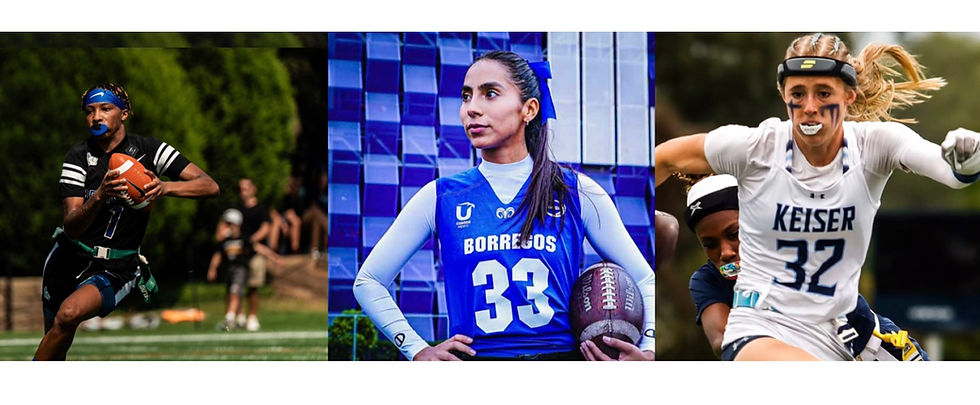College Football Players Association Discusses Union
- Landis Barber
- Jul 27, 2022
- 3 min read

Last week, stories emerged revealing that on July 14, Jason Stahl, executive director of the College Football Players Association (CFBPA), met with Penn State football players. News of the meeting between the CFBPA and Penn State football players, which included a list of demands and information regarding unionizing, led to a call between Stahl and Big Ten commissioner Kevin Warren. While the CFBPA is not a union, if the Big Ten does not entertain the CFBPA’s demands, the CFBPA may explore forming a union, which would allow the union to collectively bargain for reforms.
About the CFBPA
The CFBPA is an organization “founded to represent past, present and future college football players nationwide.” By organizing college football players, the CFBPA is a member-led organization pushing for changes in college football.
The CFBPA currently has three demands to the Big Ten, including sharing media revenue and enhanced medical care. Notably, the demands come at a time when the Big Ten is in the midst of negotiating a new media rights deal, and Division I is being transformed after the NCAA adopted a new constitution in January.
Previous Attempts to Unionize
The CFBPA’s talk of unionizing should remind fans of Northwestern University (NU) football players’ attempt to unionize through the College Athletes Players Association (CAPA) and supported by United Steelworkers. Beginning in 2014, NU football players formed CAPA and began pushing for reforms, including enhanced medical care.
Initially, the regional office of the National Labor Relations Board (NLRB) ruled that the football players were employees with a right to unionize. Specifically, Chicago regional director Peter Sung Ohr found that the athlete-university relationship resembles an employee-employer relationship.
Northwestern University appealed the regional director’s decision. Instead of overturning the decision, the NLRB declined to rule on the case, citing a lack of jurisdiction over state-run colleges and universities. Thus, ending the football players’ union efforts.
Changing Landscape
As stated previously, Division I is currently transforming, including navigating allowing athletes to profit off their name, image, and likeness, and the United States Supreme Court ruled in NCAA v. Alston that NCAA rules limited education-related compensation violated the Sherman Antitrust Act, recognizing that the NCAA is a profit-making enterprise.
Most importantly, On September 15, 2021, the NLRB’s General Counsel, Jennifer Abruzzo, issued a memorandum taking the position that student-athletes are employees under the National Labor Relations Act and thus, afforded all statutory protections. While a memorandum is merely advisory, it does yield support for the CFBPA’s position.
Other cases regarding college athletes’ status are ongoing, including Johnson v. NCAA, which is waiting on a ruling from the U.S. Court of Appeals for the Third Circuit on the following question:
“Whether NCAA Division I student athletes can be employees of the colleges and universities they attend for purposes of the Fair Labor Standards Act, solely by virtue of their participation in interscholastic athletics.”
Therefore, a lot has changed since Northwestern University football players attempted to unionize in 2014. With the changing landscape, any attempt to unionize may succeed.
Path Forward
On Tuesday, July 26, at Big Ten media day, Commissioner Warren made it clear that the Big Ten has formed a student-athlete advisory group that will discuss revenue sharing and the college athletic environment. Thus, the efforts of Penn State football players are already paying off. Will conversations between the conference and players lead to changes? Hopefully, it will. If not, the CFBPA may take a chance at forming a union.
Landis Barber is an attorney at Safran Law Offices in Raleigh, North Carolina. You can connect with him via LinkedIn or via his blog offthecourtdocket.com. He can be reached on Twitter @Landisbarber







EPS Machine EPS Cutting…
EPS Machine Eps Raw…
EPS Machine EPS Recycling…
EPS Machine EPS Mould;
EPS Machine EPS Block…
EPP Machine EPP Shape…
EPTU Machine ETPU Moulding…
EPS Machine Aging Silo…
EPTU Machine ETPU Moulding…
EPS Machine EPS and…
EPS Machine EPS and…
AEON MINING AEON MINING
AEON MINING AEON MINING
KSD Miner KSD Miner
KSD Miner KSD Miner
BCH Miner BCH Miner
BCH Miner BCH Miner
EPS Machine EPS Cutting…
EPS Machine Eps Raw…
EPS Machine EPS Recycling…
EPS Machine EPS Mould;
EPS Machine EPS Block…
EPP Machine EPP Shape…
EPTU Machine ETPU Moulding…
EPS Machine Aging Silo…
EPTU Machine ETPU Moulding…
EPS Machine EPS and…
EPS Machine EPS and…
AEON MINING AEON MINING
AEON MINING AEON MINING
KSD Miner KSD Miner
KSD Miner KSD Miner
BCH Miner BCH Miner
BCH Miner BCH Miner